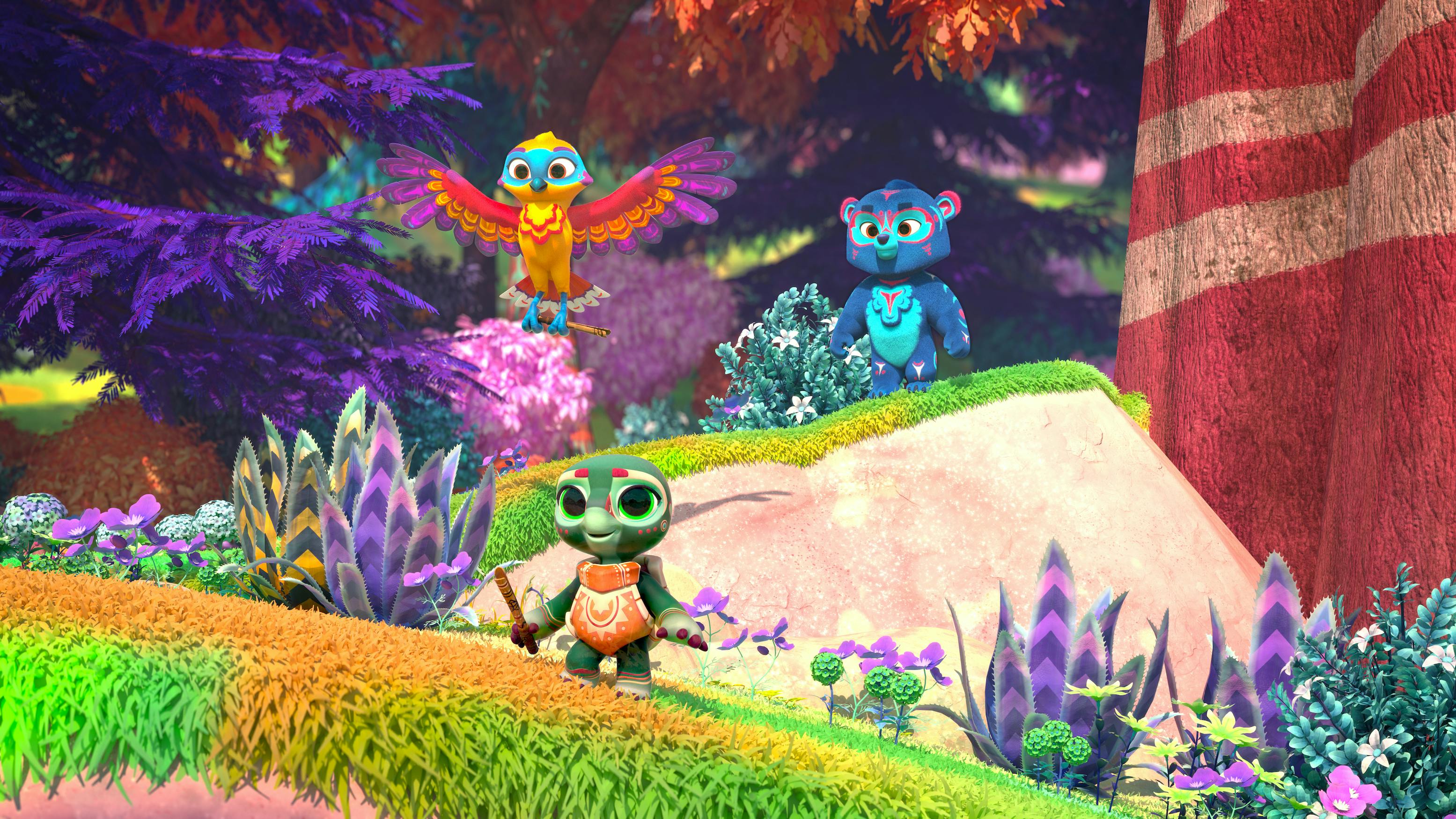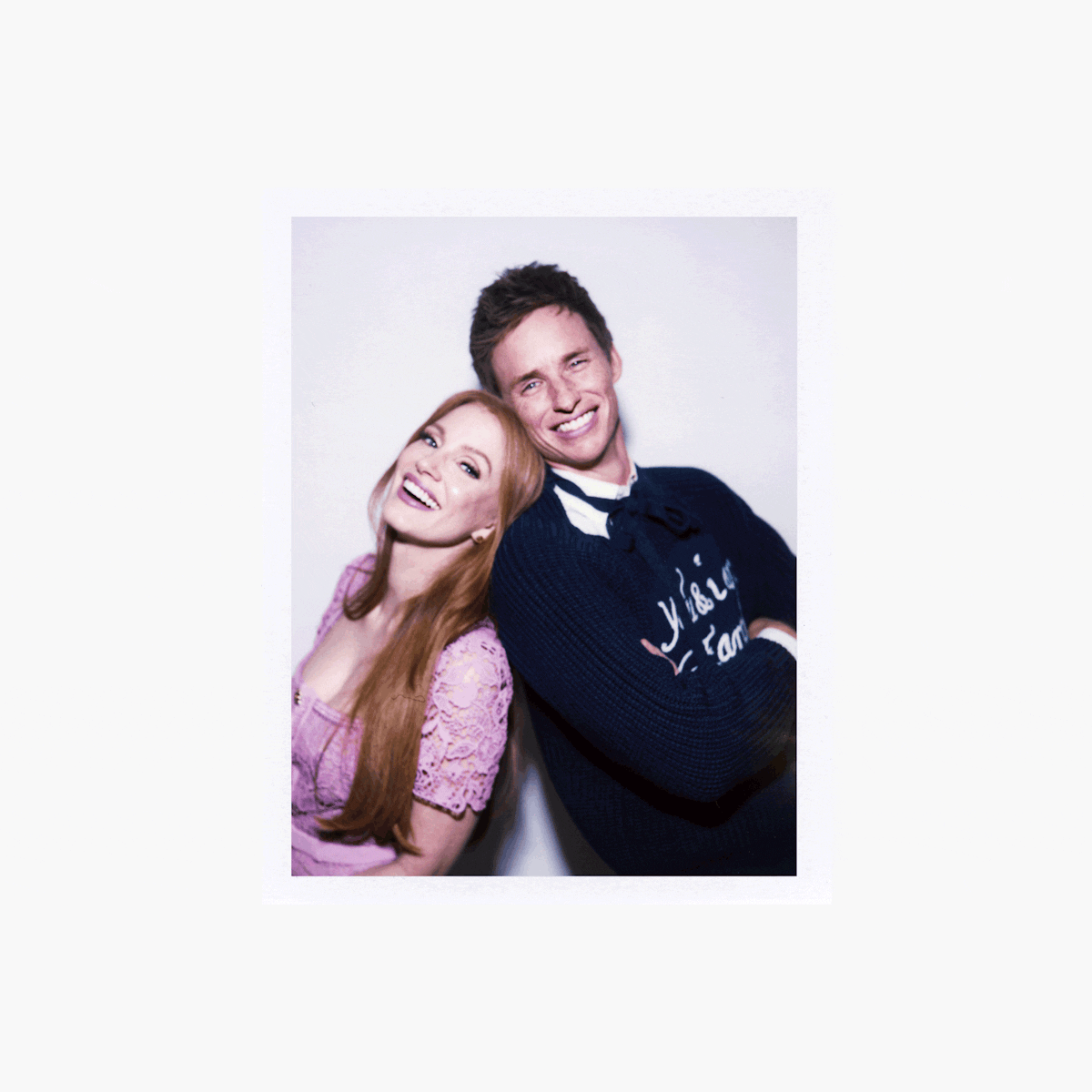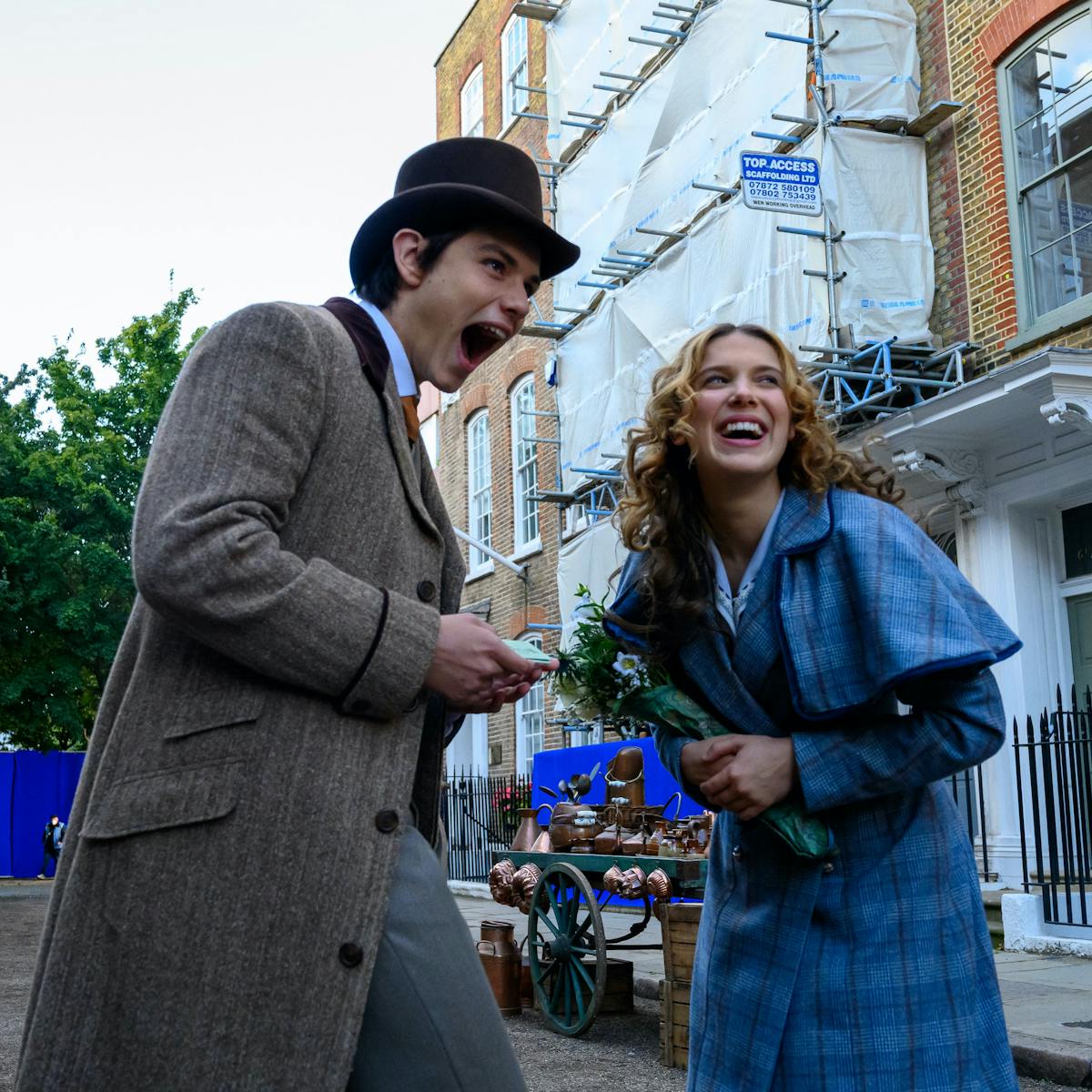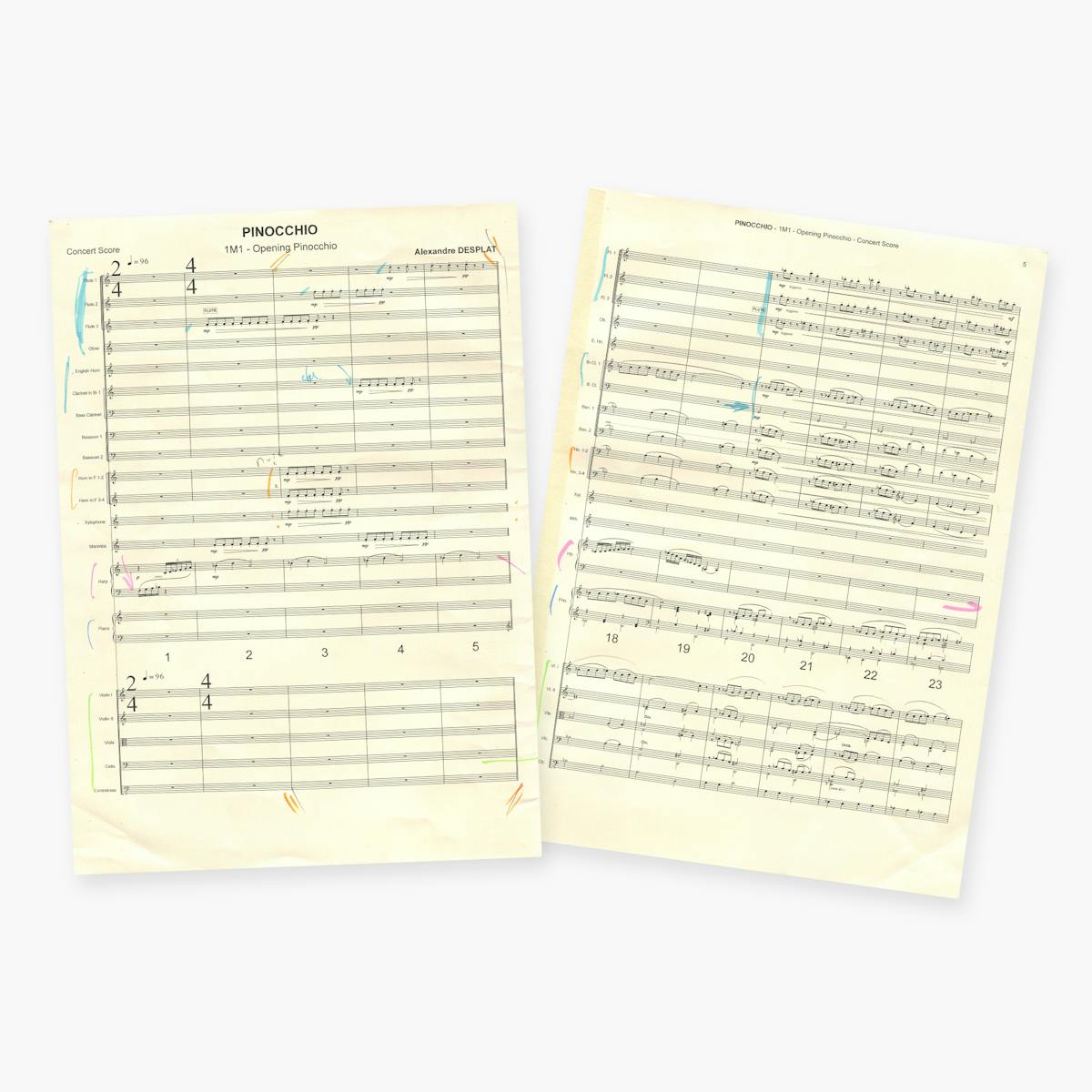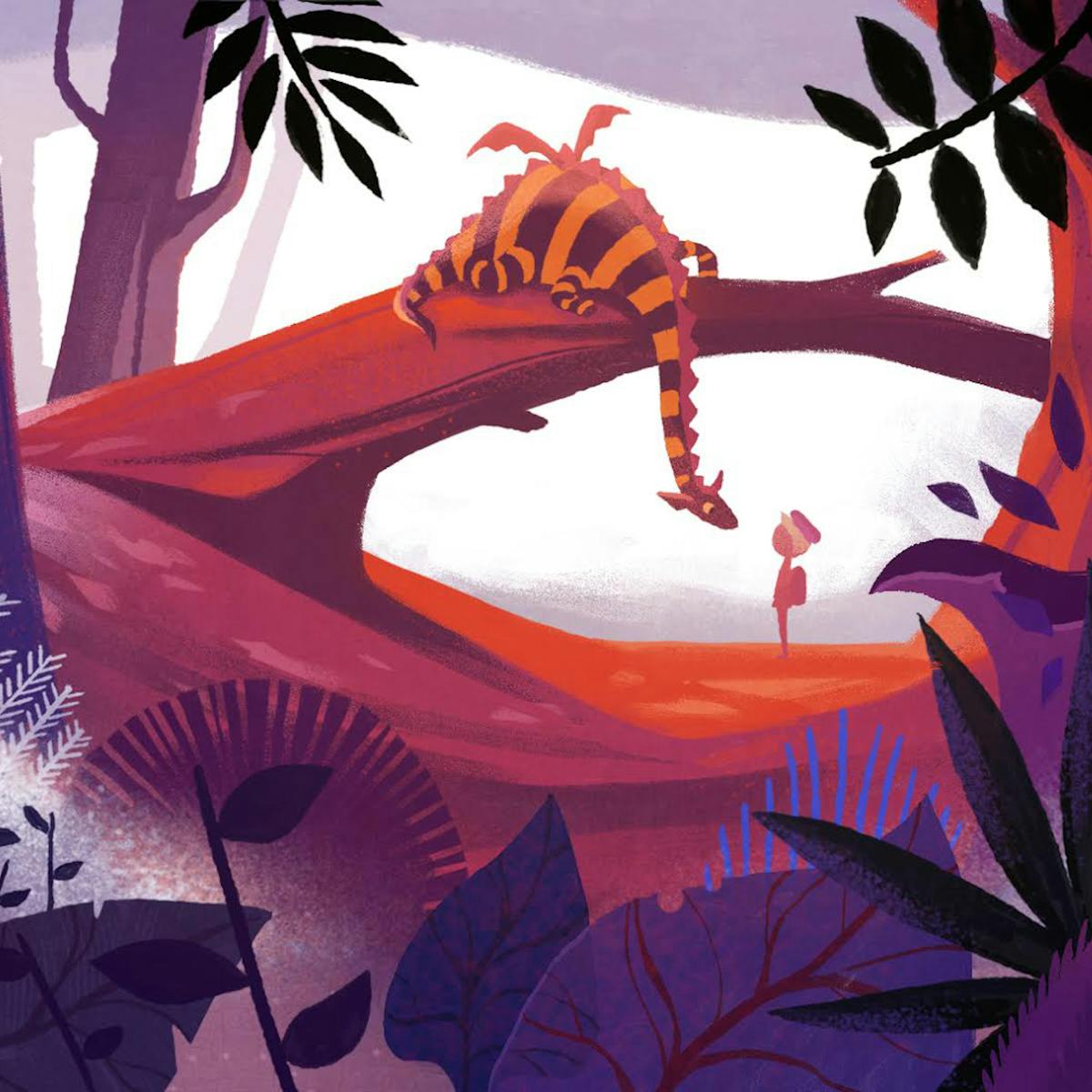Actor Kimberly Guerrero discusses Native representation and the joy of animation with creator and showrunner Karissa Valencia.
When I was a kid, obsessively watching cartoons and daydreaming of one day getting to be a part of that world, no one on television looked like me. Okay . . . one time there was an Indian kid on The Brady Bunch, but that was it. It wouldn’t be until years later that I realized the existential toll that takes on a person. On a people. For millennia, we’d been the stars of our own stories. Now, we were invisible.
As a teenager, I left Oklahoma for Hollywood. I found a mentor at UCLA who would change the direction of my life: playwright and television and film producer Hanay Geiogamah. Hanay introduced me to a vibrant circle of Native actors in Los Angeles — Wes Studi (Reservation Dogs), Sherri Foster (Unbreakable Kimmy Schmidt), Geri Keams (Rutherford Falls), and Zahn McClarnon (Dark Winds) to name a few — as well as indigenous agents of change, including poet-activist- author John Trudell (Thunderheart), whose friendship helped me understand the deeper truth behind the calling: that story is medicine, and storytelling, at its best, is ceremony.
As luck would have it, I began my career in the 90s when Westerns were making a comeback. Due in large part to the advocacy of our predecessors Jay Silverheels (The Lone Ranger), Will Sampson (One Flew Over The Cuckoo’s Nest), and Chief Dan George (Little Big Man), there was an intentional move toward Native actors playing Native characters. In addition to landing roles in period pieces, I was also cast to play compelling contemporary characters in Seinfeld and Northern Exposure. Momentum was building and it felt like we were all on the brink of the dream becoming a reality: Native shows by Native creatives. But after a decade of progress, we were suddenly, inexplicably invisible again.
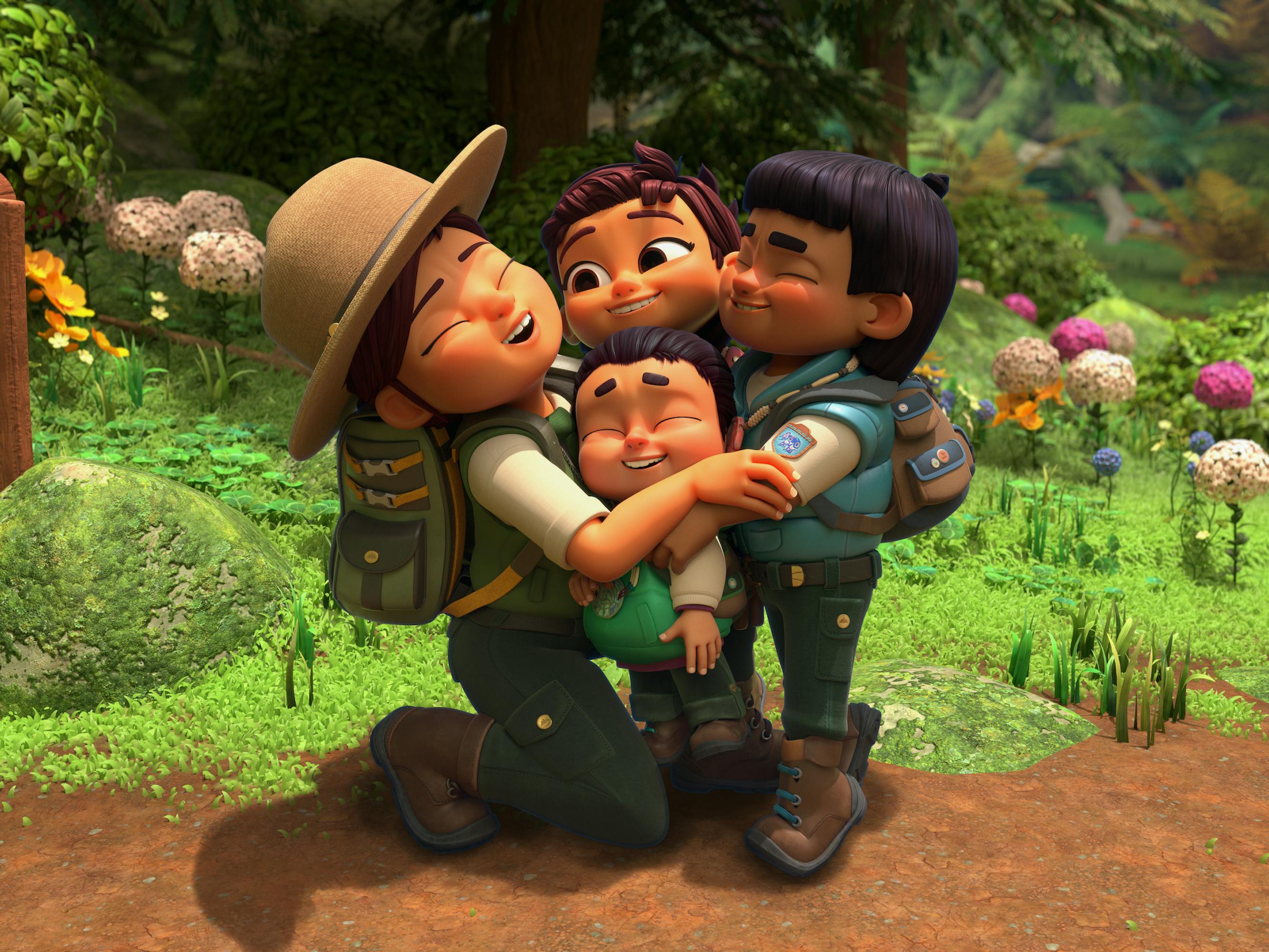
Summer Skycedar (Isis Celilo Rogers)'s Hawk, Eddy Skycedar (Talon Proc Alford)'s Turtle, Kodi Skycedar (Wačíŋyeya Iwáš’aka Yracheta)'s Bear
We kept writing and pitching shows, creating alliances within the industry, and making independent content, but by the mid-2010s, Native American representation on TV had dwindled to almost nothing. Just when the battle felt unwinnable, Standing Rock happened. Now, we had an answer when powers-that-be shut our projects down with a simple, “Nobody wants to see Indians on television.” Millions of people around the globe watching the water protectors protesting the Dakota Access Pipeline proved otherwise. Standing Rock changed everything.
As that veil of invisibility began to fall, an army of indigenous superhero-storytellers emerged full of brilliance, creativity, and general badassery: Sydney Freeland, Sterlin Harjo, Princess Daazhraii Johnson, Sierra Teller Ornelas, Tazbah Chavez, Erica Tremblay, Tai LeClare, Joey Clift, and Tommy Pico, just to name a few. Among them, Chumash Mexican wonder woman, and the creator and showrunner of Spirit Rangers, Karissa Valencia.
Karissa’s wildly entertaining animated preschool series follows three young Native American siblings who can transform into spirit rangers to protect the national park they call home. Having been privy to her magic firsthand as I voiced the Mom/Head Ranger in the show, I jumped at the opportunity to sit down with Karissa outside the studio for a heart-to-heart about how the reality of Native underrepresentation and misrepresentation fueled her own passion for storytelling, and how she and her brilliant team are bringing their unique stories, culture, and good medicine to this exciting new show.
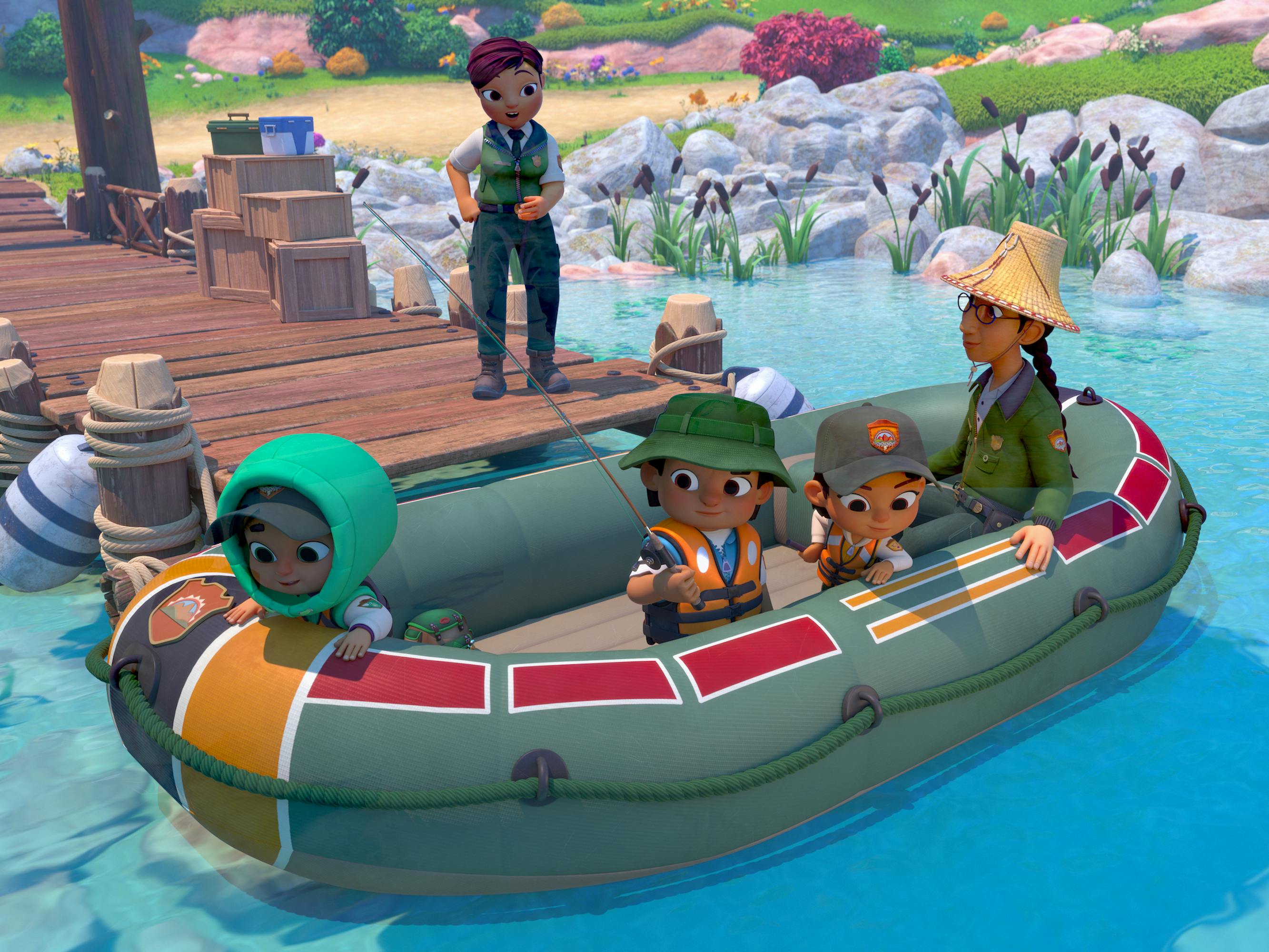
Eddy Skycedar (Talon Proc Alford), Mom (Kimberly Guerrero), Kodi Skycedar (Wačíŋyeya Iwáš’aka Yracheta), Summer Skycedar (Isis Celilo Rogers), and Dad (John Timothy) Skycedar
Kimberly Guerrero: Karissa, describe your path to television and what led you to Spirit Rangers.
Karissa Valencia: I feel very fortunate that I always knew what I wanted to be when I grew up, which was a writer. TV and movies were always the dream, but, for a long time, I didn’t see a path for myself there because, as you know, it’s hard. We didn’t really see ourselves onscreen or behind the camera, so when I would go to my family and say, “Here’s this big dream I have,” no one had an option for how to get there. But I carried on and animation was always a space I really wanted to be in.
KG: When was the first time you saw yourself and your community represented onscreen?
KV: I think the first time I really saw myself and recognized Native characters was Peter Pan’s Tiger Lily. And, of course, Pocahontas; I loved her as a little kid. Half of my family is Chumash. The other half is Mexican. And even my Mexican side of the family was like, We love Pocahontas. She’s the first woman-of-color lead and was a three-dimensional character. It wasn’t until I got older that I was like, Oh, the source material is incredibly horrible and heartbreaking. It really opened my eyes to [the fact that] all of the Native representation that I had seen was written by non-Natives, really romanticizing our culture, always seeing us in the past tense. It really messed with my identity growing up. As a kid, I would tell kids or my teachers that I was Native, and they just straight up wouldn’t believe me. I’m just so happy to be where I’ve gotten today, which is loud and proud, leading our Native team.
KG: Can you take us through the journey of assembling the writers’ room for Spirit Rangers?
I wanted to approach it from an authentic Native perspective and bring in an all-Native writing room and our Native cast.
Karissa Valencia
KV: I wanted to approach it from an authentic Native perspective and bring in an all-Native writing room and our Native cast, like you. That was super important to me because I did not want to be Queen Native, the only one saying my perspective. I thought, to make the show the best it could be, it would be showing multiple perspectives. I’m very fortunate to have assembled our fantastic writing team. They finally get to write Native characters and they’re bringing in their own stories from home. We’re making this amazing show that I think we all wish we had as kids.
KG: Absolutely! So, why do you think it’s important for Spirit Rangers to show preschoolers the spiritual side of nature and share indigenous storytelling and philosophy?
KV: Spirit Rangers follows this modern Native American family. They live in a magical national park where everything is alive and has a spirit, and they can transform into their own spirit rangers. It’s set in very fictional Samala Chumash territory, and it’s really a love letter to all national parks. Spirits visit from all over the country, so we get to meet various tribes and see the different art styles reflected within the spirits themselves. I think non-Native kids will see a fun, loving family, an action-adventure show, and lots of Native magic that’s not stereotypical. Preschoolers are going out into the world for the first time, meeting new friends. I hope that Spirit Rangers is part of that journey where they’ve seen a Native person and they know that they’re funny, they mess up, they’re these three-dimensional people. And I am just hoping one Native kid won’t have that feeling of invisibility or erasure because of Spirit Rangers. They’ll see a modern Native family, see our kids wear traditional jewelry but also use technology — they can exist both ways.
KG: What were some of the animated films you loved growing up? How did they influence Spirit Rangers?
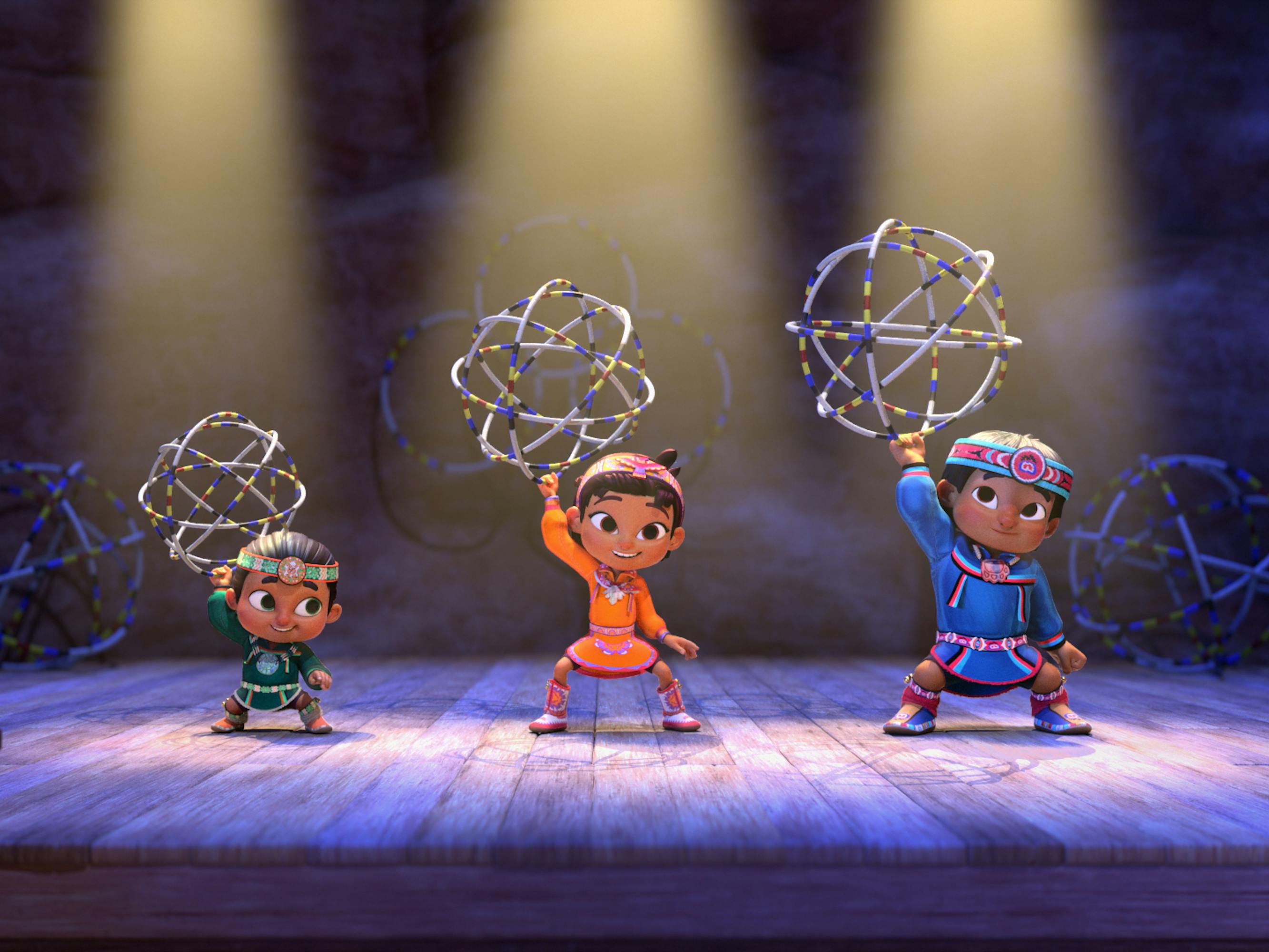
Summer Skycedar (Isis Celilo Rogers), Eddy Skycedar (Talon Proc Alford), and Kodi Skycedar (Wačíŋyeya Iwáš’aka Yracheta)
KV: I really loved Spirited Away growing up. Its celebration of the modern world clashing with these traditional folklore characters is something that’s always fascinated me. It’s in lots of things that I write, but especially Spirit Rangers.
I try to explore that there’s more than one way to be Native. Some spirits live in the city and some are really traditional. Exploring that relationship is something I really carried with me into my writing. Seeing [Hayao] Miyazaki’s films that do that was so, so cool.
KG: My first entry into anime was voice-acting for the English language version of My Neighbor Totoro. My heart leapt the same way the first time I saw Spirit Rangers as it did the first time I saw Totoro: What is this strange thing that I instinctively love and has been missing from my life? Can you talk about the indigenous visual references in the series and the developmental art?
KV: You’ll be able to see where every spirit is from based on their indigenous art style, which is really awesome. Coyote and Lizard — I picked them to be the sidekicks because it was based on the story I grew up hearing as a kid, which is how humans came into the world. Coyote wanted humans to have his features, and Lizard made our hands — that’s why we have lizard hands [according] to the story. They have a funny relationship that always made me laugh, so bringing them into the show as our everyday sidekicks was really important to me.
KG: What do you want viewers, young and old, to walk away with after watching Spirit Rangers?
KV: We’re putting all of these wonderful messages in there of Native representation and caring for the earth, but you don’t have to be Native to enjoy this show. That’s what I’m really excited about. It’s a universal show, and I’m hoping everybody will walk away learning a little something more that they didn’t know about Native culture. And the next time you kick that rock or want to squish that spider, you’ll be like, Wait a minute. It’s connected to all these different things. I’m hoping all those things will happen and everybody will have a good time watching it.
